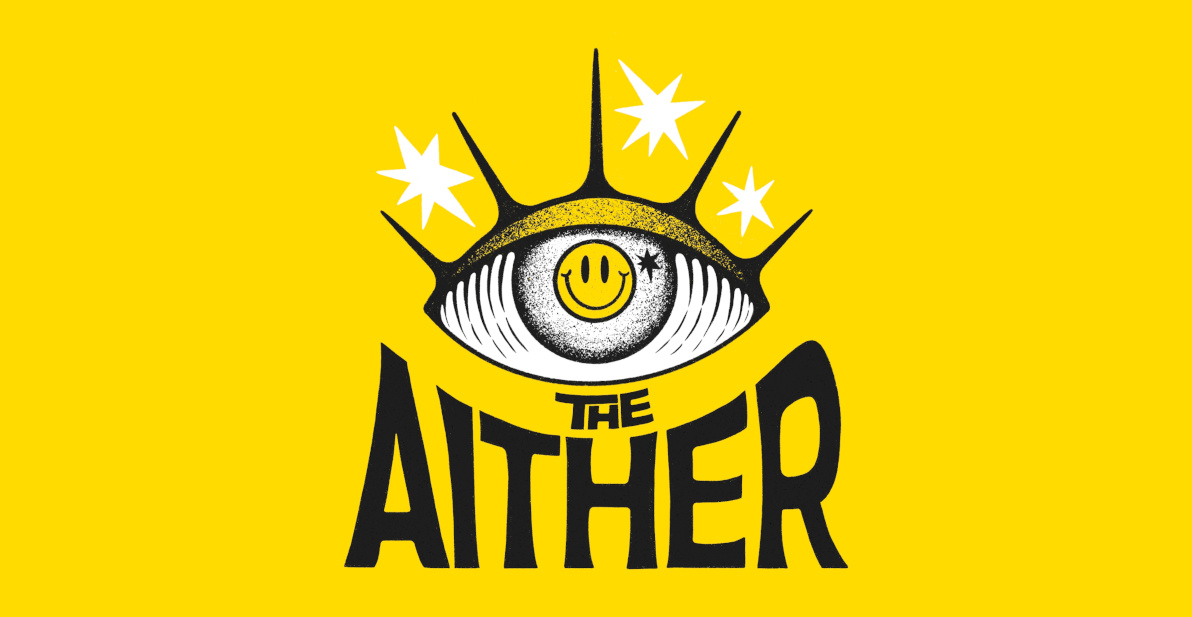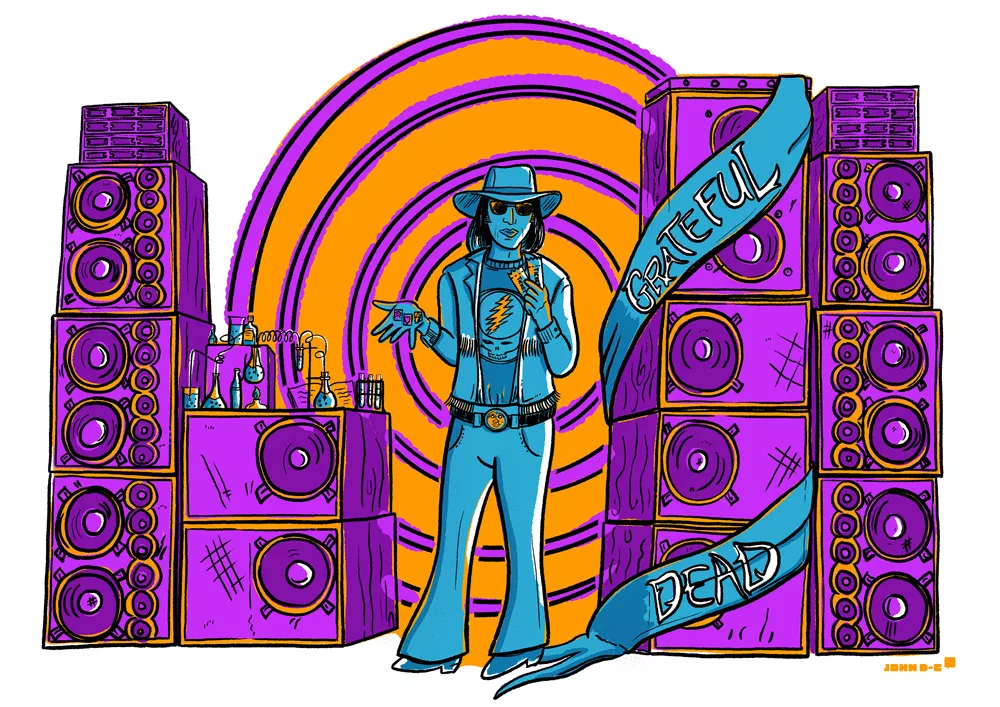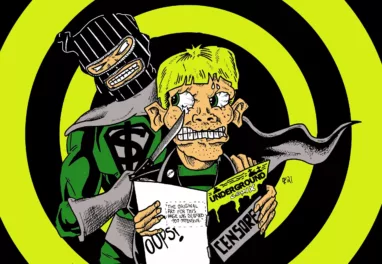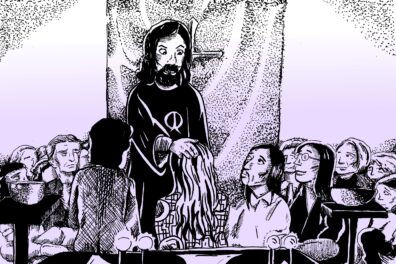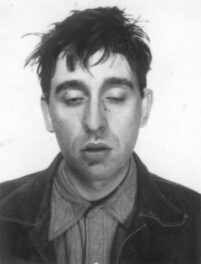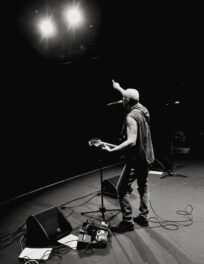Sometimes your heroes don’t give good advice.
It was 1998, I was 14 years old, and I had just learned about William S Burroughs, Timothy Leary and The Grateful Dead. I was fascinated; hooked as much as anything on the academic quality of the insanity available in those heady post-Beat days. Reading Fear and Loathing in Las Vegas was formative for me, and there was a wild mystique that hung heavy on the legacy of the Acid Tests – A series of early LSD-laden parties held by One Flew Over The Cuckoo Nest author Ken Kesey and his infamous Merry Pranksters.
The layers of myth that surround the Acid Tests, and the people that attended – a veritable who’s who of the psychedelic world –, are the druggy foundations of 60’s counterculture and the burgeoning Hippie movement. Rather than simply being a scene made up of spaced-out bohemians, as is the popular image at this point in history, these parties represented an intersection of academia and arts that allowed young Berkley students to mingle with bikers from San Bernadino and musicians from Los Angeles.
Few people represent this meeting of worlds better than Augustus Owsley Stanley the Third aka The Bear.
I was looking for information on the nascent home-internet about The Grateful Dead.
I had just learned about the Dead Family; the extended family of freaks that represent The Grateful Dead’s inner circle and closest friends. I had read a story on a forum about the initiation ritual; “thumbprinting” was rumoured to be the psychedelic endurance test that prospects underwent, whereby a member of the Family would crush a crystal of pure LSD with their thumb and press the glassy dust into a person’s flesh or tongue. (Pure LSD, for the uninitiated, is active in the microgram-range, a measurement so small that no other street drug until the invention of nBOMEs in the 2000’s has been measured in the same way; a dose the size of a mythical “thumbprint” likely represents hundreds of hits at once.)
The Grateful Dead’s legacy was inextricably linked to the rise of LSD in American counterculture.
I came across a page, simple and obviously home-made even by 1998 standards, that was selling hand-made Grateful Dead pendants and jewellery. At the bottom of the page were a series of simple links, one of which caught my eye: “Essays”.
So, following the link I discovered a half dozen or so essays with topics ranging from “Children’s TV” to “The True Reason for Drug Prohibition” and one simply entitled “Standards”. These articles espoused startling ideas for a naïve adolescent to read in the late 90’s, including the benefits of an all-meat diet and ideas on the glacial erosion that would soon be called “paleo dieting” and “climate change”.
There was no name affixed to these essays, just an email address at the bottom of the page. The name on the email address was “The Bear”.
Though I cannot remember why, other than being young and brash, I emailed him. I can’t remember the content of those emails but I remember my feeling of surprise when I received an email back. It was my first email correspondence with anybody.
I learned that he went by The Bear because it was an old nickname, but his name was Owsley Stanley.
Augustus Owsley Stanley III was infamous in the 60s counterculture scene and his legacy reaches further than most. A high-school dropout of preternatural intelligence who was born from a Kentucky political dynasty and became the live sound-engineer for the Grateful Dead, his most notorious legacy is as the first Acid Millionaire.
Supplying the California drug scene with, by his own reckoning, five million doses of LSD through the late 60s, his story became at once a criminal legend and a libertarian high-water mark.
Owsley Stanley was an early prodigy, claiming to have taught himself to read at the age of two; he equates his early learning to the education-theory of the Countess Montessori, wherein a child has exceptional learning abilities at this age that can be taken advantage of.
Remaining a firmly impetuous teenager, Stanley dropped out of high school at 15 and, despite his lack of formal education, enrolled into a mechanical engineering school to satisfy his ill-formed notions of stability.
“As a child, I actually thought I wanted to be an engineer because I thought engineers made things. I even went off and enrolled in engineering college,” said Stanley in a rare interview in 2009.
“It took me about a year to discover that engineers seemed to be sitting at desks with slide rules all the time. Slide rules were terrible, man!” [1]
After a few aimless years, Stanley joined the US Air Force at 21.
Within a few years of that he had grown restless with the military and developed an interest in ballet after witnessing the Bolshoi perform. He supported himself as a professional dancer for several years before enrolling at University of California, Berkley, to study arts. This is where his real interests and his academic pursuits finally converged.
“I went along like everybody else, just trying to pick up skills to earn a living.”[1]
Stanley says he shied away from drugs, largely minding his own business.
“I just wasn‘t interested in the drugs. I didn‘t care if people smoked pot or anything; I just wasn‘t interested in it. And my friends were quite tolerant; they didn‘t have any problems with me about that…
None of this was important, and nobody was on any kind of crusade about it.”[1]
“I had my first smoke sitting in my little MGTF on the side of the road in Pasadena after my friend had scored the weed, and I thought it was interesting. I got kind of stoned and disoriented and whatnot, and thought well gee, this isn‘t at all unpleasant… So over the next few weeks I got more into it.
At first it was hard to figure out where to buy it, as my scene in Berkeley was not involved in smoke. I finally scored, smoked some, decided I liked it.
Then someone told me about morning glory seeds.”[1]
“I never actually got around to eating them. I didn‘t want to get involved in dealing pot. I had no money or anything. But I asked my friend, – Is there anything legal that will get you high? He said morning glory seeds. So I bought a pound bag of those.
And through dealing the seeds around, I met a lot of people with other things, and traded different things, and ultimately came across speed and LSD and all the rest of it.
I think one of the aspects of illegality in drugs is that once you‘ve made things illegal, all of a sudden you‘ve opened up a Pandora‘s Box of things, and anyone who goes for any of them winds up in contact with all of them. And if you‘re going to break one law, which is a civil disobedience of a sort, well why not break another?
These kinds of laws teach disrespect for the legal process… Even speed, it seemed like it was a very nice pleasurable drug. Nobody knew at first, but after a little while on the street you found out it made a raving, babbling idiot out of you, very quickly!”[1]
Stanley’s first forays into drug manufacture were in fact producing amphetamine in a lab at Berkley.
At the EntheoGenesis Australis conference in 2009, Stanley said:
“The speed was easy, and I didn’t know anything about it – nobody did. Nobody considered it particularly bad, it was a little scene that used it. And I learned pretty quickly that stuff made you crazier than a dune bug very fast and maybe wasn’t such a good thing to do…
Once I got into the acid thing, I left that behind.” [2]
In 1965, Stanley would face raid and arrest by the DEA for producing drugs, namely amphetamines. He would avoid a criminal charge by proving that he was not producing anything illegal, seemingly due to the lack of drug analogue laws available to prosecutors at the time, and ultimately sued for the return of his lab equipment to continue producing drugs for the California market.
The fledgling psychedelic market included low-quality LSD with significant manufacturing flaws that Stanley’s piercing mind would later identify and correct – to much infamy.
“I think the vast majority of the material that was floating around in those days — that wasn‘t made, you know, in somebody‘s kitchen — was actually from Czechoslovakia. Lots of blue liquid in vials was around.
The first acid that I took was made by a guy who was actually a civil engineer that got interested in it, read one of the syntheses, and performed it in his kitchen in one step.”[1]
The earliest US made LSD was a relatively simple process of converting a monohydrate of LSD that was available from some pharmaceutical manufacturers into a usable product. However LSD and its precursors, while legal at this time, were still firmly in the realm of experimental chemistry and even procuring this semi-prepared ingredient was difficult.
“It wasn‘t all that easy to get. I was able to obtain some — sixty grams from a well-known chemical firm — and then I found a better connection, who was ordering it from Pharmitalia. He was changing the bottle so I wouldn‘t know where it came from. I bought 400 grams from him. He was actually pretending he made it!
I guess he took me for a fool, or something, but he did sell me the material, and it was the genuine article.”[1]
After his first forays into psychedelics in 1964, “real” LSD was still very difficult to come by for the fledgling tripper.
“Well, shit, if I can‘t get any, obviously there‘s only one other way out. Go to the library.
All the organic synthetic chemistry that I know about is the stuff I picked up in a few weeks in the UC library.”[1]
“I‘m not a chemist, I never pretended to be a chemist. I‘m an artist. There‘s no more chemistry to making LSD than there is to making a bloody cake. You just have to know how to do it. What bits to use, what temperature to set the oven, etc…
A chemist is a highly skilled person. I don‘t have any of those skills. What I did is like following a recipe.” [1]
Despite his mythical status in the psychonautical world, Stanley did not turn on the United States with any lofty personal goals in mind.
“I didn‘t like what I was getting. You know, the published synthesis worked with about seven and a half grams of material.
Seven and a half grams of starting material carefully manipulated produces nearly seven and a half grams of final product. That‘s about a 67% yield, which is a very, very good yield for a synthetic peptide process — especially as sensitive and unstable as the lysergic acid compounds are.
So seven and a half grams of material is a supply for a big mob of people. — a massive amount, at the dosage we chose, nearly thirty thousand trips! So what are you going to do with it? Give it away.
All the equipment that I had to use to make it is costly, so I had to get some money back. But I never felt it was my money. None of the money that came from acid I felt was my money. I was like a custodian of it, and didn‘t know what to do with it. It was a real problem for me. I never bought a decent car even during this time. I certainly didn‘t buy any houses or anything. I just didn‘t believe it was mine.
What I was doing was something for the community that had great cosmic significance — although I could live off of it. But I tried to plough as much of it back into the community that I could. I gave a lot of the material away, gave out handfuls of the stuff in the park all the time.
I put about half of it out through the free-distribution system, and the other half went through the money-distribution system. I felt that giving so much of it away for free kept the markup in the sale loop to a low level. The quality stayed high and the markup stayed low, and people got it anyway.
Putting it out through the sales trip allowed a wide distribution that wouldn‘t have happened if there had been no money in it.
One of the reasons I did it as carefully as I did was the thought/fantasy that if the authorities were to have come to me and said, ―We want to see how you are doing this, they wouldn‘t have been able to find a single flaw with the way I was doing it. I was doing it absolutely by the book. The tablets were clean and pure and were of uniform dosage. The material itself to start with was, in fact, more highly purified than the commercial product from Sandoz, the patent holder.
We were trying to do it right, because anything else is a rip-off. After all, people are taking this into their bodies, and shouldn‘t have to take a risk with their health.”[1]
This care and caution speaks to the quality of Stanley’s product, which quickly became legendary among the counterculture heads of the West Coast. His batch of “Monterey Purple”, which was being shared freely at the Monterey Pop Festival, was the inspiration for one of Jimi Hendrix’s most famous songs. The Beatles were tripping on Owsley acid throughout their Magical Mystery Tour of the US.
His “White Lightning” batch, which was renowned for its incredible strength and purity among trippers, has been commemorated in song by more musicians than it’s worth listing here. Owsley “Bear” Stanley’s acid, it is not an exaggeration to say, helped shape the hippie movement at its genesis.
Nonetheless, Stanley remained circumspect about his un-academic forays into chemical science.
“Well, you know, the dosage was perhaps the biggest mistake we made. We read about Hofmann‘s bicycle ride, and that sounded right. That was what he had taken, so it had a tradition. We assumed that was the optimal dose. In the entire intelligentsia scene with which I had contact they were into doses that ran mostly from about 100 up (micrograms), and the tablets that (pharmaceutical manufacturer) Sandoz made were 25, the vials 100. But When I met Kesey, his idea of the proper amount turned out to be 400!
The strength of the dosage was far too high really.”[1]
Meeting Ken Kesey became a pivotal moment for Stanley and for the counterculture movement. The author, famous for his off-kilter narrative about mental illness One Flew Over The Cuckoo Nest was part of a fledgling community of academics, artists, and high-functioning maniacs known as The Merry Pranksters.
The Pranksters were readying themselves for a series of blow-out parties at a remote property in the hills east of San Jose. Stanley was about to meet the Hell’s Angels, and Kesey had been giving them acid.
“I went down… and, Jesus, boy, that was sort of like getting strapped to a rocket sled. The stuff that those guys would do with your head, and the drugs and everything else, was nothing like anything else I had experienced before. It was absolutely dramatic.
The Angels turned out to be some of the farthest-out people I ever in my life had met.
They were just cut free by this thing. It was like a key.
Kesey was playing with stuff which I recognized as ancient magical shit. But they didn‘t know it. They just kind of stumbled on it by playing around… I thought they were running kind of loose with it. And that it was dangerous. And in some ways it was. But it didn‘t matter. It was working and they were doing it.
This, of course, is evidence that the ancient doctrines are based on psychedelics. That was Kesey‘s back house at the place in the woods in La Honda; the Acid Tests followed.”[1]
Soon, this fateful intersection of people would bring Stanley face to face with nascent, drug-fixated rock and roll fixtures The Grateful Dead.
“I first saw them at the Acid Test,” says Stanley. “I met them later at the Fillmore, and almost immediately hooked up with them. And they almost immediately went to LA, to follow the Acid Tests.
I decided that since I had gotten on the bandwagon to be their soundman, I would go along too.”[1]
“I thought ‘These guys are fantastic’. But the music was scary. It was scary, it pushed me to the edge, and I thought the sound of Garcia’s guitar was like the claws of a tiger… dangerously scary.
Very, very ‘to the point.”[3]
The Acid Tests are the stuff of legend, where Kesey and Hunter Thompson and Sonny Barger and every other guest who ever claimed to be in attendance has given eloquently conflicting accounts of the parties. The most famous book on the topic remains Tom Wolfe’s The Electric Kool-Aid Acid Test.
Stanley, for his part, is forgiving in his appraisal.
“I never talked to the guy who wrote that one, Tom Wolfe,” Stanley begins.
“It was interesting, because reading his descriptions I could name the people he talked to. It was very easy to do because these people he talked to, he had very good descriptions of. He has an amazing ability to describe character. But then they would talk about other people, so that the people that he was constructing from the stories the other told him, those were not clear. Unfortunately, Wolfe has some kind of compulsion to put everything he writes about down.”
Stanley, through experimentation and rapid study, built The Grateful Dead the first live stereo sound system, creating an increasingly complicated wall of speakers for every show to capture the sonic breadth of the biggest psychedelic band in America. Beginning around 1966, Stanley began plugging a bulky Ampex 602 tape recorder directly into the sound-desk at Dead concerts to keep what he would later call his “sonic journals”.
“I could play you tapes of the early Dead that would make you cringe they’re so bad. They couldn’t sing for shit. Any one of them could sing on his own okay, but they sounded terrible together, and I think part of that was the fact that the technology of on-stage monitors was pitiful… It was sometimes painful.
In fact, at the beginning I remember saying to them, ‘Gee, guys, maybe you should stick to instrumentals, or songs where only one person sings.’ Fortunately, they didn’t listen to me.”[5]
Stories of the band’s time with Bear Stanley are the kind of thing parents groups and wowsers believed might happen in the darkened halls of a psychedelic rock and roll show back in the late 60’s – Drugs flowed so freely that there was little time to sober up before guinea-pigging another batch of Stanley’s wares, where he would lay trips out for distribution in the same little house he shared with them in LA.
Eventually, however, these wild times had to come to an end, and they came to an abrupt halt with Stanley’s arrest in 1972. After years of successfully evading DEA and police (by stashing his drugs in a nondescript case travelling back and forth between Californian towns in the cargo hold of a Greyhound bus), he was finally arrested with 300,000 doses of LSD, as well as some of the ludicrously-powerful STP (known for giving people long, bad trips up to 30 hours in duration).
He served two years in Federal prison, a fact which he still regarded as more of a political than moral failing well into his 70s. While in prison, he taught himself jewellery craft, and when he was finally released he found his life’s calling in producing artwork themed and inspired by his bewildering life, and the insane stories that surrounded him finally began to cool down.
He has talked a little about his move to Australia in 1982, appearing to have given up the rat-race for something of an off-grid treechange.
“Well, I live out in the country. I‘m basically a country boy; I don‘t like cities much. I like nature. I don‘t like to rely upon the civil infrastructures; we generate our own electricity and so forth. It keeps me busy trying to maintain things, but I don‘t have to worry about the power surges that blow out your TV and your computer and telephones. And believe me, it happens a lot, they have a very primitive power system here.
I don‘t know why it‘s primitive, but no one here seems to know what to do about it. In fact, I don‘t even want to think about it, so I just ignore it, I stay away from it.”[1]
However, his views as espoused to a naïve teenager with much to learn sounded far closer to apocalyptic paranoia. He talked of escaping to an elevated plateau where there was a significant amount of arable land, healthy soil, and access to fresh water and natural resources.
He regarded that a location much like this would be a safe place to build a self-sustaining property that would remain habitable after even the most catastrophic sea-level rise due to Anthropocene climate change. He chose Atherton, in the tablelands a couple of hours drive from Cairns in tropical Far North Queensland. The region is known as grazing and farming land buried deep in the hills of the Capricorn Coast. If you were to speak to locals, Stanley was somewhat well-known in the small community. He would sometimes be referred to as “Doctor Stanley”, and few locals seemed to know the history of this enigmatic American with an all-meat diet and a strange, knowing manner about him.
Fittingly, Stanley remained something of an outsider even with his more notorious lifelong peers. He spoke of his pseudo-academic relationship with psychedelic chemist Alexander Shulgin (whom he claims to have learned the recipe for over-powered hallucinogen STP), and has spoken with the father of LSD, Albert Hofmann (who once told Stanley that the doses he was prone to taking represented a “significant overdose”[2]).
But as one of the last of his breed, he maintained a complicated history with one of the other great elk of the psychedelic movement, Timothy Leary.
“I got an email letter from a fellow who wanted me to contribute a tribute to a collection he was assembling. I said – Look, there‘s got to be plenty of people who will write nice things about Tim Leary, I don‘t think you want to hear what I have to say… I said, basically, what it boiled down to was that I didn‘t think that Tim Leary was a hero. Not a hero to me, anyway.
In fact, if I were going to be real precise about what I think, I think Tim Leary was probably the worst thing that ever happened to the psychedelic movement. He made everything difficult for all of us; he wouldn‘t listen to any of us who tried to tell him to back off a bit. He was most probably primarily responsible for all the draconian laws we have today on the use of psychedelics and other mind-altering things.”[1]
Stanley’s difficulty with people, that so encouraged his removing himself to nature, may go some way to explaining why he was so ready to respond to a random email from a curious young Australian. He encouraged me to read his brief but poignant essays, and to discuss questions with him.
It was the first time I had heard anything like some of the views expressed, and I was intrigued – if not completely convinced – by this legendary music figure/drug tsar and his comprehensive but estranged outlook on the world.
Emailing back and forth was something of a family affair. My elder brother, who helped fill in some of the gaps in knowledge, gleefully responded to emails about topics such as meat and the apocalypse. We were fascinated with the depth of knowledge the man displayed, even if we remained concerned that this knowledge was being misused in some way.
One day, through one of these back and forth discussions that verged on conspiracy-peddling, he learned that my mother had contracted Ross River Fever from a mosquito bite. He told us he had a solution; something much like a cure. He wrote out the very simple instructions and asked for it to be explained to my mum.
My brother and I, both stifling laughter, took this bold plan to her. She could barely contain her incredulity.
He had instructed her to place both hands on a cattle-strength electric fence and try to hold on for a few seconds. He had explained it in a very sober way, and had given what he believed was the basic explanation (I am certain he would be loathe to use the word “science” here).
He had said, in essence, that the virus is not conditioned to survive electricity.
My mum was not convinced, which is understandable and expected. Stanley was quite insistent though. He asked to speak to my mum directly. She emailed him back, and we left her to discuss electrifying herself on a cattle fence with a man named Bear.
(I love you mum.)
I cannot explain how, and I was never privy to the rest of the conversation, but somehow after an afternoon of chatting with Owsley Stanley by email, my mum was now convinced. She was going to seek out an electric fence and grab it because a man who once gave LSD to Jimi Hendrix told her to.
I was sure she was joking.
She went out with her partner, both well into their 50’s and old enough to know better, and found an electric fence. They found the power box and checked the voltage; Bear had been specific, so as to avoid death.
My mum described standing by the fence, assuming the experience would be much like a mild shock from an appliance, and grabbed the fence. She described being immediately jolted back and being caught by her partner. And then, for reasons I have never gotten a satisfactory answer to, she stood up and did it again.
Stanley died in a car accident near Cairns in 2011; a bewildering life cut down in the most tragically normal way, as the long highways and winding hill roads of Far North Queensland are ripe for just such misadventure.
Newspapers around the world paid tribute to the quiet progenitor of an entire cultural movement.
“Take note and weep as we find ourselves in a world full of wannabe celebrities,” said ABC News Australia.[4]
The New York Times called him the “Artisan of Acid.”[6]
The Oxford English Dictionary still lists the word “Owsley” as a noun describing a batch of his highly potent acid pills, despite them not having been available for close to 50 years.
As for my mother, she no longer has Ross River Fever. However, Ross River Fever goes away. She was likely to stop showing signs of the virus in tests eventually anyway, so it is hard to say whether electrifying herself on the advice of a man named Bear was an effective cure.
I am informed by people with significantly more medical knowledge than myself that it is not.
References
[1] owsley-stanley-interview-with-an-alchemist.pdf (wordpress.com)
[2] Episode 1 – Bear (Owsley) Stanley ‘Reflections’ – Speaking openly about his life, LSD, DMT and politics (podomatic.com)
[3] (97) Owsley Stanley Interview – YouTube
[4] Owsley Stanley’s acid trips helped define the sound of the 1960s, but his recordings are just as important – ABC News
[5] Music Intro (thebear.org)
[6] Owsley Stanley, Artisan of Acid, Is Dead at 76 – The New York Times (nytimes.com)
Article art by John Debono-Cullen aka John D-C.
